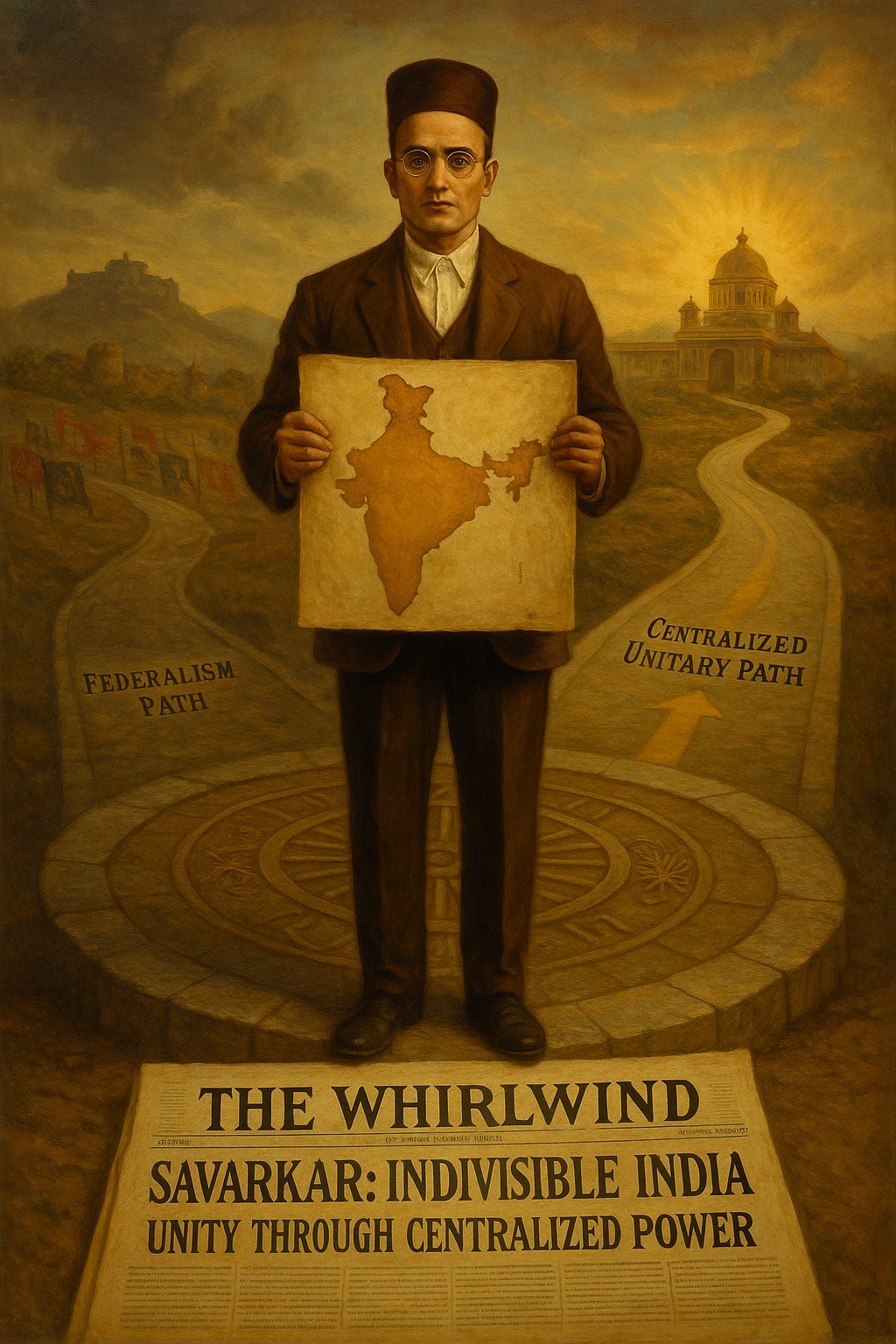Political Dimension of Hindutva, Part 9
In Vinayak Damodar (Veer) Savarkar’s view, the challenge of preventing particularistic interests has been one of the most significant hurdles both in the struggle for independence and in shaping the post-colonial Indian state. Movements like the Andhra Movement or the alignment of Bengal’s independence struggle with regional interests highlight the risks of separatist tendencies threatening the integrity of a unified Indian state. While these movements were crucial to the fight for independence, they also posed a serious danger to national unity.
In this context, Savarkar emphasized that one of the greatest benefits of British colonial rule was the unification of India’s fragmented factions into a single people. Against this backdrop, he strongly criticized the federal structure implied by the Government of India Act of 1935, calling it inadequate, unsettling, and deeply disappointing. His primary objection was that the act failed to grant real power and effective governance, especially in critical areas such as military control and foreign policy, to representatives of the people.
The Vision of a Unified and Centralized India
For Savarkar, the future of India was clear: it had to be not only a united nation but also a unitary one, stretching from Kashmir to Rameshwaram, from Sindh to Assam. However, he did acknowledge a functional role for the federal principle. He argued that although the British-introduced federalism appeared unstable due to its attempt to unify diverse political entities into a single framework, it still had the potential to mitigate tensions arising from communal divisions.
For this reason, neither Savarkar nor the political party Hindu Mahasabha (HMS) under his leadership chose to boycott federalism outright, even if it was implemented in its current form. At the same time, he made it clear that he and the HMS would leverage any advantage that a federal structure provided to strengthen their position and advance the cause of independence. This strategy would continue until full legislative and executive power rested in the hands of representatives of the Indian nation.
The Need for a Strong Centralized Leadership
Savarkar’s perspective on statehood aligns with his broader vision of nation-building, which emphasized the necessity of a strong, centralized authority. Drawing from historical examples, such as the institution of Chakravartitva, he suggested that effective governance required a powerful central institution. He cited the rise of the Marathas as an example, asserting that political independence and the safeguarding his political-ideological vision of Hindutva were best ensured within a centralized state.
In this regard, Savarkar maintained that a unified nation and state had the right to self-determination. However, he rejected the idea that individual provinces, districts, or states could claim a similar right to secede and form independent nations. A province, by definition, was a subordinate part of a larger nation and thus could not justify secession. While he conceded that provincial autonomy could be granted, he stressed that it must always recognize the supremacy of a powerful, independent, and centralized Indian state.
Final Thoughts – Unity Through Centralized Power
Savarkar’s political philosophy presents a strong case for centralized governance as the key to India’s unity and strength. While he acknowledged the role of federalism in managing communal tensions, he viewed a powerful central authority as indispensable for national cohesion and effective governance. His vision of India was one where a unified national identity superseded regional division, ensuring both political stability and the safeguarding of Indian sovereignty.
Do you think India today reflects more of Savarkar’s centralized vision or a federal structure? How do you see the balance between national unity and regional identity in India? In your opinion, is strong central leadership necessary for maintaining national cohesion? Do you agree with Savarkar that British rule, despite its oppression, helped unify India politically? Was Savarkar right in criticizing the Government of India Act of 1935 as inadequate for self-governance? What lessons can we draw from the Maratha experience that Savarkar invoked to justify central authority? Share your thoughts in the comments below!
Sources:
SAVARKAR, Vinayak Damodar .2007. Hindu Rashtra Darshan. Bharat Bhushan. Abhishek Publications: New Delhi.
SAVARKAR, S. S. and G. M. JOSHI. (Eds.). 1992. Historic statements (Prophetic Warnings). Statements, Telegrams & Letters. 1941 to 1965 by Veer Vinayak Damodar Savarkar. Veer Savarkar Prakashan: Bombay (Mumbai).
SAVARKAR, Vinayak Damodar. 1971. Hindu-Pad-Padashahi or a review of the Hindu empire of Maharashtra. Bharti Sahitya Sadan (Fourth Edition): New Delhi.
SAVARKAR, Vinayak Damodar. 1924. An Echo from Andamans. Vishvanath Vinayak Kelkar: Nagpur, in GROVER, Verinder. 1998. Vinayak Damodar Savarkar: A biography of his vision and ideas. Deep and Deep: Publications: New Delhi.)


Leave a Reply